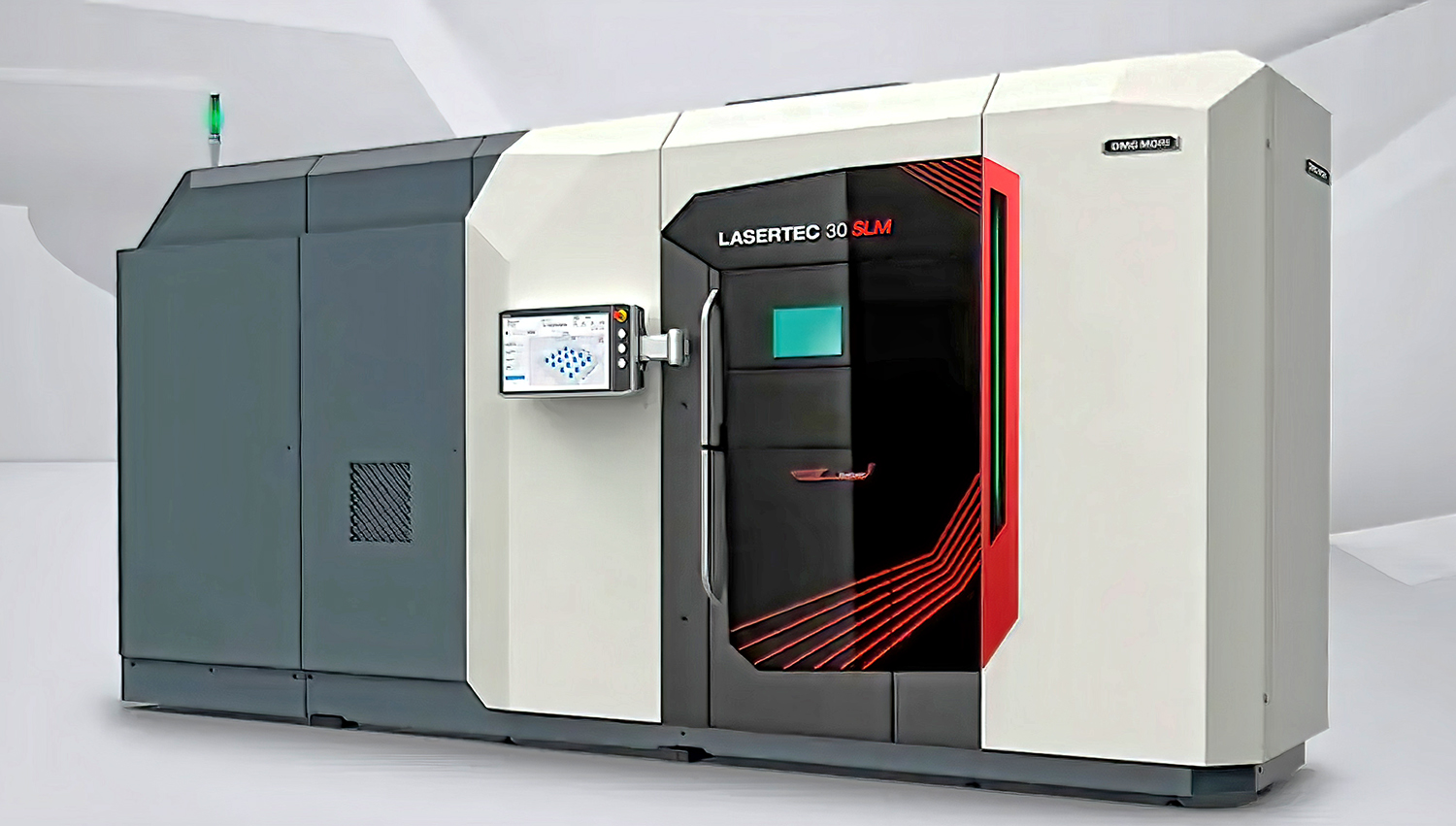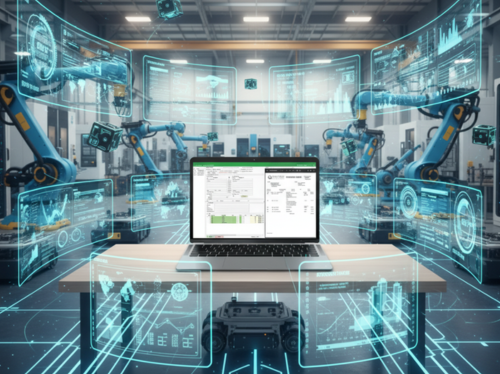Next-Generation additive manufacturing machine has a cast structure

A new additive manufacturing (AM) machine, the third generation of the LASERTEC 30 SLM, has been introduced by DMG MORI. The company says that the selective laser melting platform has been completely redesigned to combine robustness and repeatability with thermal stability. Having a fully overlapping quad laser working area and a build volume of 325 x 325 x 400 mm, the specification is intended to appeal to a large section of the market.
The LASERTEC 30 SLM 3rd Gen builds on the strengths of previous versions, while accommodating suggestions from customers in an ever-changing AM market. A notable feature is that, unusually in the field of AM, it has a rigid cast structure based on the material and design principles of the majority of DMG MORI’s milling and turning machines.
Unlike in metalcutting machine tools, in a LASERTEC there are no appreciable forces transmitted to the structure from movement of the axes. The rationale for using a casting in this latest AM machine is to resist thermal expansion due to unavoidable temperature changes. DMG MORI has many years of experience in minimising the effect of, and compensating for, temperature changes within its products.
Care has been taken to ensure that the process chamber is an isolated unit within the machine and free to expand and contract in all directions as the temperature varies. In contrast, the optics are mounted on the rigid cast frame. The distance between the optics and the surface layer of the powder bed is kept constant by calibrating the bi-directional recoater and actively compensating for any displacement in the Z-axis.
To reduce the time delay between successive builds and to increase flexibility, DMG MORI’s rePLUG unit is an important competitive advantage. It is a self-contained, automated powder processing unit that can be exchanged with other rePLUG units to simplify and speed changing over to process different materials.
Customers with qualified processes, often in the aerospace and medical industries, rely on the system to ensure top quality powder is continually in use. Excess powder from the working area is sieved, stored and prepared for re-use in a closed loop, all under an inert gas atmosphere. This not only minimises oxidation and any moisture build-up, but also reduces potential operator exposure to the powder.
For the first time in a DMG MORI LASERTEC SLM, it is possible to exchange the build container, while preserving the inert gas atmosphere inside the machine. This increases efficiency further, since it is no longer necessary to wait for the previous build job to cool down before quickly starting a new one. Disruption during a build cycle is minimised by camera-based monitoring of the surface of the powder bed. After the recoater lays down each new layer, the surface is scanned for anomalies before the lasers move.
A newly designed inert gas delivery system ensures a consistent laminar flow over the powder bed. A secondary gas flow below the protective glass aims to avoid any accumulation of residue. The glass itself is under constant observation by a second camera that warns if there is a problem. Additional lighting is provided in the area to help the operator when checking and cleaning the protective glass between builds.
DMG MORI has placed emphasis on the usability and ergonomics of the machine. Reducing operator contact with the powder is a primary consideration. Another key area is the CELOS X digital ecosystem, which guides the operator through all the steps required to set up a new job. For example, it prompts the operator to clean the safety glass and shows how it is done. It also walks the operator through the powder refilling process, and how daily checks and maintenance are to be performed.








